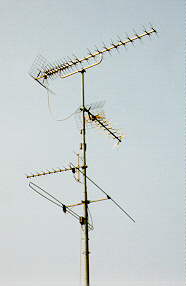
 |
Wireless CommunicationChapter: Business and Regulatory Aspects |
Modern (digital) signal processing (DSP-)techniques can mitigate these effects to a great extent. As a result, nowadays the most quoted critical issues of wireless systems are no longer directly related to multipath fading, but are

 Start page of video from Short Course by BMRC Video from Wireless Communications Networks Short Course
|  Embedded QuickTime Video | |